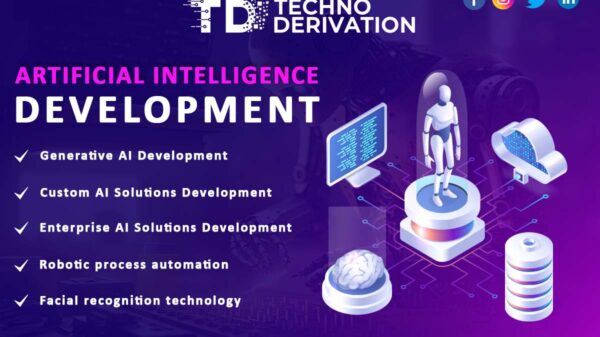In a world where technology continuously reshapes our experiences, augmented reality (AR) stands at the forefront, blending the digital with the physical to create immersive environments. Developing an AR app offers a thrilling opportunity to innovate, engage, and transform the way we interact with our surroundings. This article delves into the essentials of AR app development, exploring the journey from conceptualization to deployment.
The Genesis of an AR App
The creation of an AR app begins with a spark of imagination. Whether it’s an educational tool, a gaming experience, or an innovative retail solution, defining a clear purpose is the first step. This vision will guide the development process, ensuring the app meets user needs and stands out in a competitive market.
Conceptualization and Design
Research and Market Analysis: Before diving into development, it’s crucial to conduct thorough research. Understanding the target audience, analyzing competitors, and identifying market gaps will shape the app’s unique value proposition.
User Experience (UX) Design: AR apps rely heavily on intuitive and engaging user experiences. Design wireframes and prototypes to visualize the app’s interface and interactions. Employ user-centric design principles to ensure the app is easy to navigate and visually appealing.
Content Creation: AR thrives on high-quality, interactive content. This involves 3D modeling, animations, and graphic design. Tools like Blender and Unity’s AR Foundation can be instrumental in creating captivating AR experiences.
Development Tools and Technologies
Choosing the Right Platform: Decide whether the app will be developed for iOS, Android, or both. Each platform has its AR development kits—ARKit for iOS and ARCore for Android—that offer robust frameworks for building AR applications.
Development Environment: Unity and Unreal Engine are popular choices for AR development due to their powerful features and cross-platform capabilities. They provide extensive libraries and tools to streamline the creation process.
Programming Languages: C# is commonly used with Unity, while Unreal Engine relies on C++. Familiarity with these languages will be essential for coding the app’s functionality.
Building the AR Experience
Marker-Based vs. Markerless AR: Choose the type of AR experience. Marker-based AR uses image recognition to trigger animations or information overlays, while markerless AR relies on plane detection and spatial recognition to place digital objects in the real world.
Implementing Features: Develop core features such as object recognition, real-time tracking, and interaction mechanics. Utilize AR frameworks to handle complex tasks like environment mapping and depth sensing.
Testing and Optimization: Rigorous testing is crucial to ensure the app functions seamlessly across different devices and environments. Optimize the app for performance, focusing on reducing latency and improving tracking accuracy.
Deployment and Beyond
Beta Testing: Release a beta version to a select group of users. Gather feedback to identify bugs, usability issues, and areas for improvement. Iterate on the design and functionality based on this feedback.
App Store Submission: Adhere to platform-specific guidelines for app submission. Prepare compelling app descriptions, screenshots, and promotional materials to attract potential users.
Post-Launch Support: Continuously update the app to fix bugs, introduce new features, and improve user experience. Engage with the user community to gather feedback and foster loyalty.
The Future of AR Development
As AR technology evolves, the potential applications expand across industries. From revolutionizing education with interactive learning modules to transforming retail with virtual try-ons, the possibilities are limitless. Emerging technologies like 5G and advancements in AI promise to further enhance AR experiences, making them more immersive and responsive.
Developing an AR app is not just about embracing a trend; it’s about pioneering the future of digital interaction. By combining creativity with technical prowess, developers can create applications that not only captivate users but also redefine how we perceive and interact with the world around us.
In this dynamic field, staying abreast of technological advancements and continually pushing the boundaries of what’s possible will ensure that your AR app not only meets current expectations but also sets new standards for the future. Embrace the challenge, and step into the augmented reality revolution.
Conclusion: Leveraging PlugXR for AR App Development
In the rapidly evolving world of augmented reality, leveraging powerful platforms like PlugXR can significantly streamline the development process. PlugXR offers a comprehensive suite of tools designed to simplify AR app creation, making it accessible to developers and non-developers alike.
With its user-friendly interface and robust features, PlugXR eliminates the need for extensive coding knowledge, enabling creators to focus on innovation and user experience. Its compatibility with major AR SDKs like ARKit, ARCore, and Vuforia ensures that your app can harness the latest AR capabilities across different devices.
Furthermore, PlugXR supports a seamless workflow from design to deployment, offering cloud-based services for easy content management and real-time updates. This allows for rapid prototyping and iterative improvements based on user feedback, ensuring your AR app remains relevant and engaging.
By integrating PlugXR into your development process, you can accelerate the creation of high-quality AR experiences, reduce time-to-market, and stay ahead in the competitive landscape. As AR continues to revolutionize various industries, tools like PlugXR empower developers to transform creative visions into reality, making augmented reality an integral part of our digital future.
In Conclusion
Developing an AR app with platforms like PlugXR not only enhances efficiency and innovation but also paves the way for groundbreaking applications that redefine how we interact with the world. Embrace this technology, and lead the charge in the next wave of digital transformation.




















































































































































































